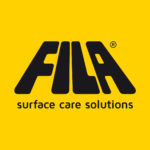We are specialized in the realization of:
Performed thanks to automated technologies or even manually thanks to specialized workers.
These treatments are applicable to surfaces in marble, granite and agglomerates.
Legislative Decree 626/94 art.33 provides that:
“… the floors of the premises must be free from protuberances, cavities or dangerous inclined planes, they must be fixed, stable and non-slip …”.
The anti-slip treatment guarantees safety at low cost:
The anti-slip treatment is an innovative system that allows all slippery surfaces to comply with the law (DLGS 626/94) at low cost and without necessarily having to replace the flooring. It acts at the level of the microscopic structure and permanently. With the anti-slip treatment, the danger of slipping drops from 300% to 800%, especially on wet surfaces, both internal and external.
The non-slip treatment does not alter the aesthetic appearance of the treated surfaces, is acid-free and acts on the following materials: ceramic tiles, porcelain, artificial stone, natural stone, granite and glazed surfaces, shower trays and bathtubs; even on the non-slip tiles, the treatment produces a significant improvement in adhesion.
The treated surfaces are permanently protected and can be walked on immediately, the operating times required for treatment are extremely reduced, reducing the inaccessibility of places to a few hours and without the production of annoying dust and debris to be removed. The product is also biodegradable, free of acids and solvents.

By cleaning we mean that set of treatments aimed at removing impurities, encrustations and deposits from the surface of natural materials and with polishing those treatments that through the deposition of a wax increase the gloss (the degree of diffraction of light), enhance the colors natural and finally protect the surface from the natural degradation that time brings. Polishing with wax is typically reserved for marble floors with a glossy surface finish laid indoors. As a sectoral standard we divide marbles and granites in their different treatments. After mechanical removal of impurities (brushing), cleaning with a neutral detergent (ph 7) diluted in water (concentrated for new floors) is normally recommended.
If the floor is subjected to heavy traffic it must be rinsed and rinsed daily with water and diluted, non-acidic or strongly alkaline neutral detergents. Particular attention must be paid to the removal of sandy, abrasive materials, which can be transported from the outside. Before retracing it, check that it is perfectly dry. Periodic manual or mechanical polishing through the application of wax also has a protective and water-repellent effect to preserve the original shine over time. Absolutely avoid aggressive and abrasive detergents containing acids, strong alkalis or other abrasive components that cause a chemical or physical attack on the surfaces (better to repeat themselves). On marble, acids react with calcium carbonate, compromising its brightness. Granite is extremely more resistant. The maintenance interventions are mostly due to the reactions of the installation and to exceptional events such as breakages, falls of heavy objects, acids and normal wear and tear. When the work is finished, the marbles and granites express their natural splendor, making every place pleasant wherever they are, from the floors of large hotels to the bathroom of the house. For their maintenance there are various procedures for every need. It starts with the simplest, which is the daily removal of dust and dirt, extremely important to ensure the beauty of marble and granite.
To clean natural stones, the following must be avoided:

Stain resistant for polished marble and granite tops

Colorless stain remover for natural stones

Antique effect for pebbles and natural stones

Anti-stain anti-humidity for marble and granite

Cleaner for rough stones in marble, granite, pebbles

Sanitizing detergent for cleaning all types of stone

Protective and revitalizing treatment